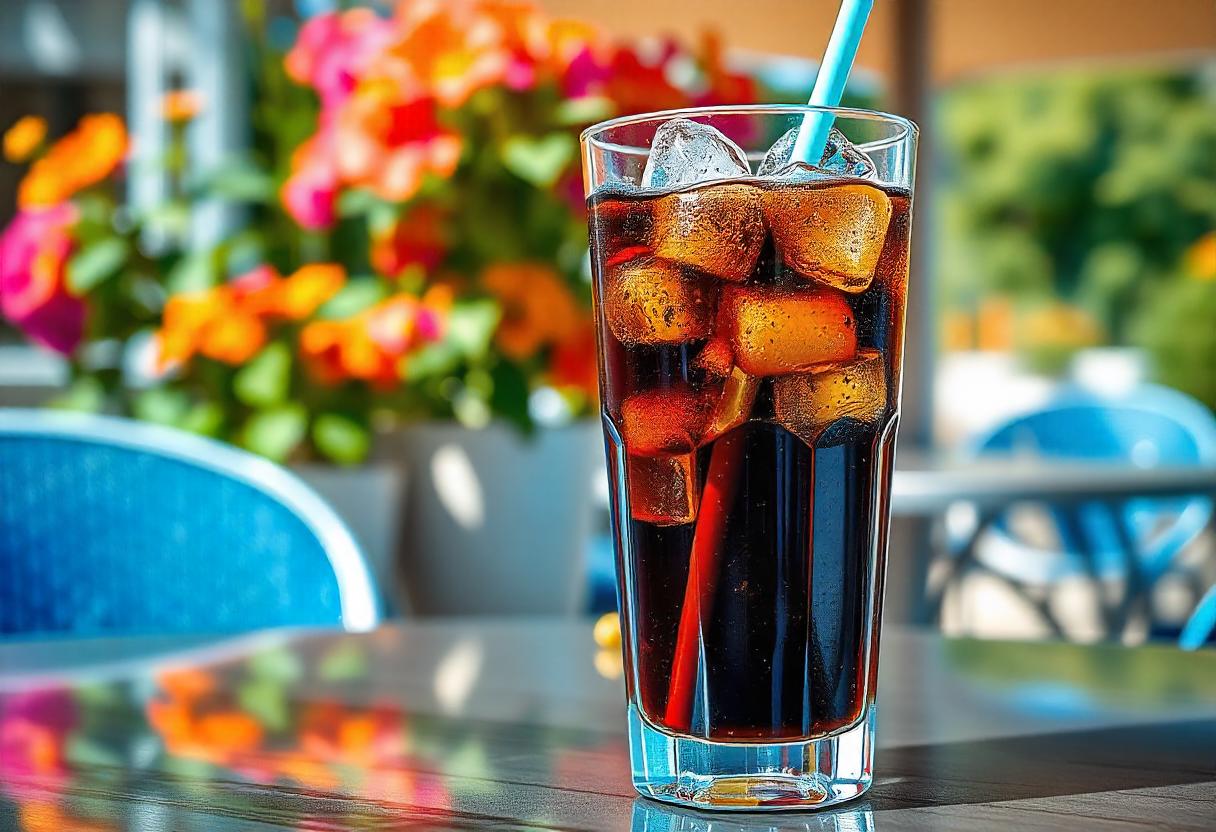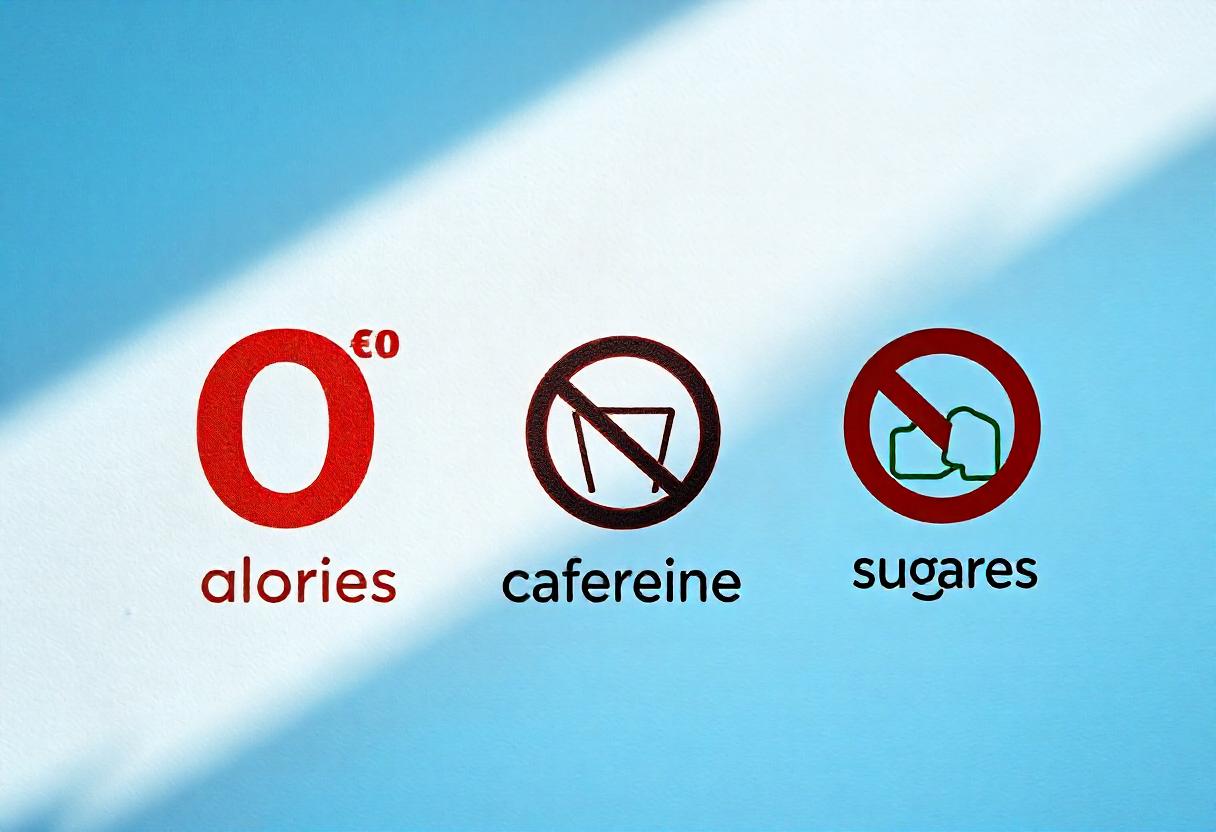
Pepsi Caffeine Free is a refreshing soda choice that stands out in the world of soft drinks. It offers the bold taste of Pepsi without caffeine, making it a go-to option for those who want to enjoy their favorite soda without the stimulant effects of caffeine. This guide dives into the key aspects of this Caffeine-Free Soda—its history, nutritional facts, health considerations, social media impact, and more.
What is Pepsi Caffeine Free?
It is a variant of the classic Pepsi soda, specially formulated to remove caffeine. It offers the same bold, refreshing taste as regular Pepsi but without the added stimulant. As a result, it has become a popular choice for people who are sensitive to caffeine or those seeking to reduce their intake.
Unlike other Pepsi variants, like Diet Pepsi or Pepsi Max, which are also sugar-free but still contain caffeine, it is entirely caffeine-free while maintaining the full-bodied flavor that Pepsi fans know and love.
History and Creation
The Early Beginnings
This Caffeine-Free Soda was first introduced in the early 1980s as part of PepsiCo’s strategy to cater to a growing demand for caffeine-free alternatives in the soft drink market. The rise of health-conscious consumers, particularly those looking to cut back on caffeine for medical or lifestyle reasons, influenced the creation of this product. As part of the Pepsi product lineup, it was designed to offer the same bold and familiar flavor of regular Pepsi, but without the stimulating effects of caffeine.
Initial Reception and Market Position
When Pepsi first hit the shelves, it was seen as a niche product. It targeted a specific segment of the soda-drinking population—those who loved the taste of Pepsi but didn’t want the energizing effects of caffeine. Despite its initial success, Pepsi didn’t become a mainstream product right away. It primarily attracted those with sensitivities to caffeine, such as pregnant women, people with high blood pressure, or those who preferred to avoid it for other health reasons
Reintroductions and Variants
It has seen multiple reintroductions over the years, each time responding to changes in consumer preferences. In the late 1990s and early 2000s, the demand for caffeine-free products surged as people became more health-conscious. PepsiCo capitalized on this trend by reintroducing the product in new packaging and alongside a broader range of sugar-free options. As the health-conscious movement gained momentum, the brand found a more prominent place on the shelves.
Modern-day Appeal
Today, it remains a favored option for consumers looking for a caffeine-free, calorie-free beverage that delivers on flavor. It holds a niche in the soda industry but has also found broader appeal as part of Pepsi’s growing collection of healthier alternatives.
Pepsi Caffeine Free: Health and Nutritional Facts

Nutritional Breakdown:
- Calories: 0
- Sugar: 0g
- Caffeine: 0mg
- Sodium: 40mg
- Carbohydrates: 0g
Health Appeal
This soda offers a calorie-free, sugar-free option for consumers who enjoy the refreshing taste of soda without the added calories or sugar. The absence of caffeine makes it a popular choice for people who are sensitive to caffeine or prefer to avoid it for health reasons. It’s also a suitable beverage for those looking for a healthier alternative without compromising on taste.
Pepsi Caffeine Free vs. Other Pepsi Beverages
Pepsi Caffeine Free vs. Regular Pepsi
While regular Pepsi contains about 38mg of caffeine per 12-ounce serving, Pepsi Caffeine Free eliminates this stimulant, making it the ideal choice for individuals who want to avoid caffeine but still crave the signature Pepsi flavor.
Pepsi Caffeine Free vs. Pepsi Max
Pepsi Max is another zero-calorie Pepsi variant that contains caffeine. It is marketed as having a stronger, bolder taste compared to regular Pepsi. In contrast, Pepsi Caffeine Free maintains the familiar Pepsi taste but without the added caffeine, offering a more subtle and caffeine-free refreshment.
Pepsi Caffeine Free vs. Diet Pepsi
Both options are sugar-free, but one contains caffeine while the other does not. The sweeteners used in each soda differ, contributing to a slightly distinct flavor profile. However, both offer a sugar-free, zero-calorie choice.
The Flavor Profile of Pepsi Caffeine Free
This Caffeine-Free soda delivers the same bold and sweet flavor as regular Pepsi. Its taste is both refreshing and satisfying, with a caramel-like sweetness balanced by the familiar cola flavor. For those who enjoy the crisp, fizzy experience of soda but wish to avoid caffeine, This soda provides the ideal option without sacrificing taste.
Ingredients in Pepsi Caffeine Free
It is made using a blend of ingredients that contribute to its unique taste and refreshing qualities. These ingredients include:
- Carbonated Water: Provides a fizzy texture.
- Caramel Color: Gives the soda its signature dark hue.
- Artificial Sweeteners (Sucralose & Acesulfame Potassium): These sweeteners provide the drink’s sweetness without adding calories or sugar.
- Phosphoric Acid: Adds tanginess and balances the flavor.
- Citric Acid: Enhances flavor and provides tartness.
- Caffeine-Free Flavorings: Replicate the signature Pepsi taste.
Caffeine Content in Pepsi Caffeine Free
One of the main features of this caffeine-free soda is its total lack of caffeine. Unlike many sodas, which still contain caffeine to provide an energizing effect, It is perfect for those who want to eliminate caffeine from their diet—whether due to pregnancy, certain medical conditions, or personal preference.
Social Media Impact of Pepsi Caffeine Free
Social Media Campaigns
Over the years, Pepsi has used social media platforms like Instagram, Facebook, and Twitter to promote It, highlighting its refreshing taste and caffeine-free benefits. As social media became a dominant marketing tool in the early 2010s, Pepsi capitalized on this trend with targeted ads showcasing This Caffeine-free sode as the perfect drink for those looking to avoid caffeine while still enjoying the same bold taste. These campaigns often focused on the lifestyle benefits of choosing a caffeine-free option.
Influencer Collaborations
Pepsi also tapped into influencer marketing, partnering with social media influencers who promoted this Caffeine-free soda to their followers. This strategy helped Pepsi reach a younger, trend-conscious audience increasingly seeking healthier beverage options. Through Instagram stories, TikTok videos, and sponsored posts, Pepsi was able to reach millions and create buzz around the product.
Hashtag Campaigns
Pepsi has used several hashtag campaigns to encourage people to share their experiences with the beverage on social media. Hashtags like #CaffeineFreePepsi or #PepsiWithoutCaffeine have been employed to create community engagement, prompting individuals to post about their preferences for caffeine-free drinks. This social media buzz has helped position it as a trendy and health-conscious choice for the younger generation.
Consumer Feedback and Engagement
Pepsi also actively engages with consumers on platforms like Twitter and Facebook, responding to feedback about the beverage. Social media comments and posts often reflect how consumers appreciate the refreshing taste and lack of caffeine, leading to a loyal following of brand advocates who promote the product online.
Health Considerations: Pros and Cons
Pros:
- Zero-calorie: A great option for those looking to maintain a healthy lifestyle without sacrificing flavor.
- Sugar-free: Ideal for people avoiding sugar for dietary or health reasons.
- Caffeine-free: Perfect for individuals who want to avoid caffeine but still enjoy a refreshing soda.
Cons:
- Artificial Sweeteners: Some people may have concerns about the long-term effects of consuming artificial sweeteners like sucralose and acesulfame potassium. However, numerous studies suggest that these sweeteners are safe when consumed in moderation.
- Lack of Nutrients: While this caffeine-free soda is refreshing, it doesn’t provide any significant nutritional value, as it is essentially a flavored beverage without essential vitamins or minerals.
Pepsi Caffeine Free in Different Markets
It is available in various markets worldwide. While specific availability may differ, it is widely distributed in countries such as the United States, Canada, and parts of Europe. Regional variations may exist in terms of ingredients, packaging, and promotional offers. For example, in some countries, the product may be available in glass bottles, while in others, it may only be offered in plastic bottles or cans.
Impact on Pop Culture and Marketing Campaigns
Over the years, Pepsi has successfully marketed This Caffeine-free soda through various campaigns, emphasizing the drink’s health-conscious appeal. It has been featured in commercials, social media promotions, and sports sponsorships. Additionally, Pepsi has used its iconic pop culture status to position it as a bold, refreshing, and trendy alternative to traditional sodas.
Sustainability Initiatives Around
As part of its commitment to sustainability, PepsiCo has launched several initiatives to reduce its environmental impact. These include using recyclable bottles and cans and promoting sustainability across its production process. It is available in eco-friendly packaging, contributing to PepsiCo’s broader sustainability goals.
Where to Buy Near Me
If you’re looking to pick up this caffeine-free beverage, check out the drink aisles in local grocery stores, supermarkets, or convenience stores. Major retailers like Walmart, Target, and Costco generally stock a wide selection of popular soda brands, including caffeine-free options in both cans and bottles.
For online convenience, platforms like Amazon, Walmart, and Instacart allow you to order soft drinks with delivery to your doorstep, making it easy to enjoy a caffeine-free soda whenever you like.
Use Google Maps or store locator tools on retailer websites to find the nearest location that carries caffeine-free options!
Summary
It provides a refreshing alternative for those who love the classic Pepsi taste but want to avoid caffeine. With its history, nutritional facts, and health considerations laid out, this article offers a comprehensive guide to this beloved beverage. It has also gained significant traction through social media, influencer campaigns, and its growing market presence. Whether you’re seeking a caffeine-free alternative or simply a refreshing soda, It delivers on taste, convenience, and a healthy lifestyle.
Frequently Asked Questions (FAQs)
Yes, Pepsi Caffeine Free is caffeine-free, making it a safer option for children compared to regular sodas that contain caffeine.
No, Pepsi Caffeine Free is a sugar-free beverage, making it a good choice for people looking to reduce their sugar intake.
Yes, Pepsi Caffeine Free is caffeine-free, so it is considered safe to consume during pregnancy, though it’s always a good idea to consult with a doctor.
Pepsi Caffeine Free is available in many countries, but availability may vary by region. It is most commonly found in North America and parts of Europe.
While Pepsi Caffeine Free is free from caffeine and sugar, it is still a processed beverage and doesn’t provide any significant nutritional benefits. It can be part of a balanced lifestyle but should be consumed in moderation
Join the Caffeine-Free Revolution!
Are you ready to enjoy This Caffeine-Free soda? Experience the bold taste without the caffeine! Find it at your nearest store or order online for delivery. Use the hashtag #CaffeineFreePepsi on social media to let us know your thoughts on it.



